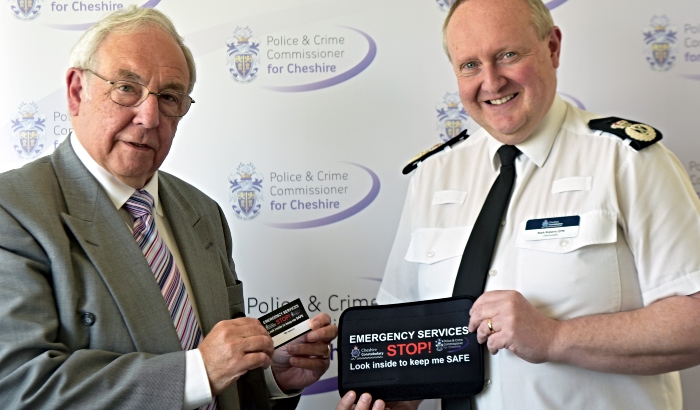
Cheshire Police has issued seatbelt covers to 3,000 neuro-diverse children across the county.
The seatbelt covers will draw the attention of emergency responders who will see a contact card with information about the child if they are involved in a road collision.
The card will detail how they are more at-risk, such as if they are non-verbal or will run away if left unattended, and how best to help them should a parent or carer be unresponsive or unable to relay this information following a collision.
Cheshire is the first police force in the country to issue such seatbelt covers.
The idea for “Project Cherish” came from a police officer whose own experiences highlighted the need for them.
It is now being supported via the Police and Crime Commissioner’s Police Innovation Fund.
The covers have been distributed across Cheshire through schools and specialist education providers to nearly 3,000 vulnerable neuro-diverse children.
It is hoped they will give peace of mind to parents and carers of children with autism in particular.
Cheshire Police and Crime Commissioner John Dwyer said: “Collisions, by their very nature, are high-risk situations which require people to get the right help at the earliest possible opportunity.
“When a neuro-diverse child is involved, the risk is heightened and emergency service workers have to be fully aware of their needs.
“When Project Cherish was proposed to me, I had no hesitation in supporting it and am delighted that my Police Innovation Fund will make a difference in this way.
“Protecting vulnerable and at-risk people is a priority in my Police and Crime Plan and this is a simple step we can take to support thousands of neuro-diverse children across our county.”
Chief Constable Mark Roberts said: “Cheshire Constabulary are delighted to support this initiative and really push for it to be rolled out far and wide.
“We want to do everything possible to minimise the impact and the trauma of a young person, particularly one with a neuro-diverse condition, and how they are impacted should they be involved in a collision.”

















Recent Comments